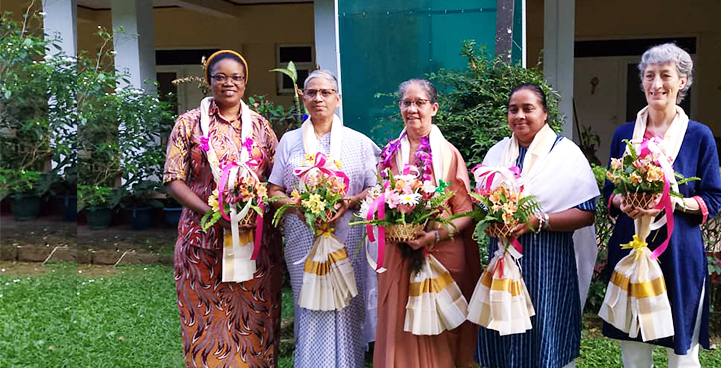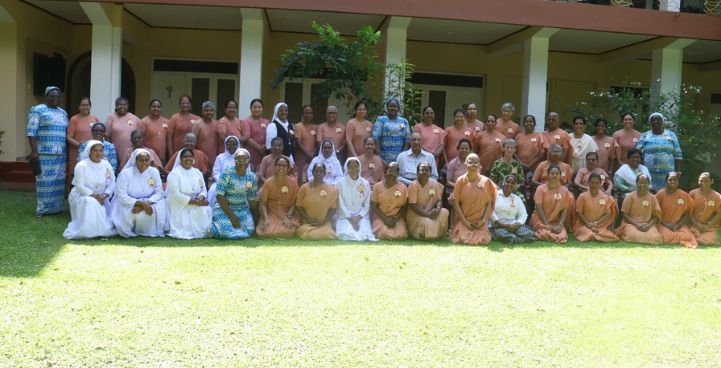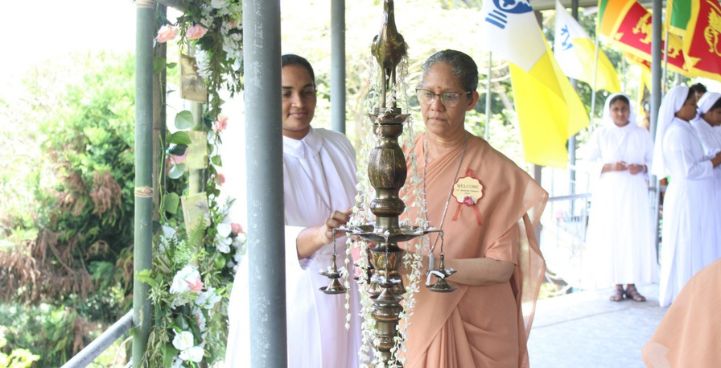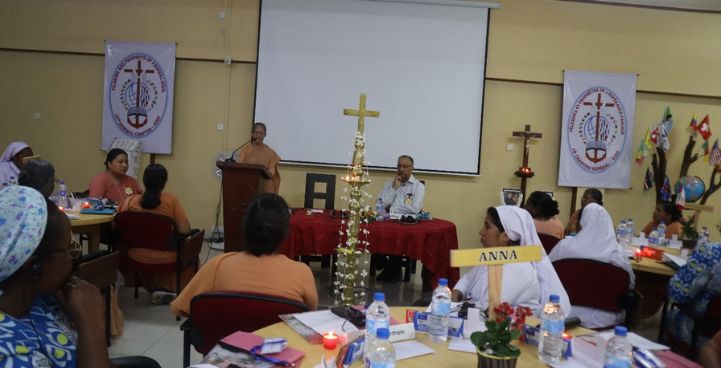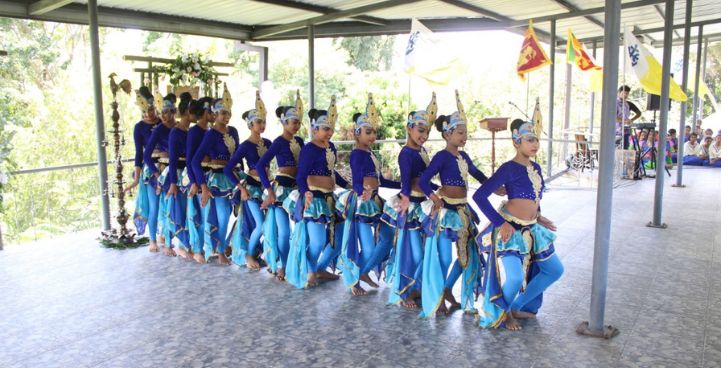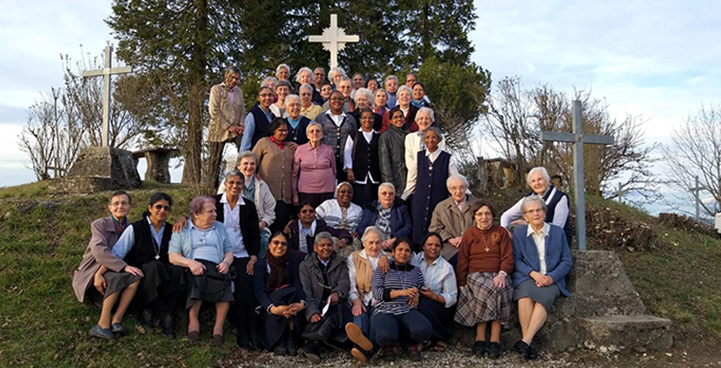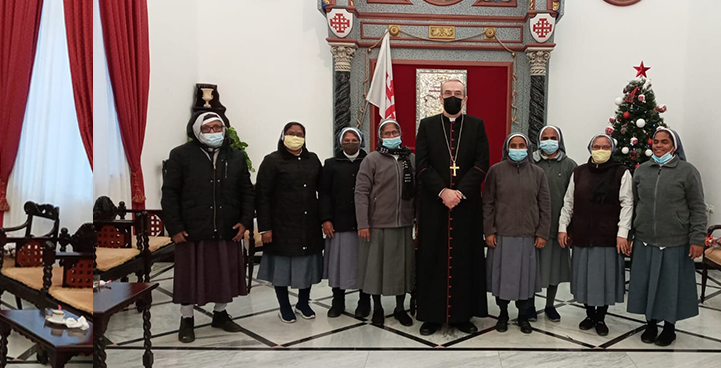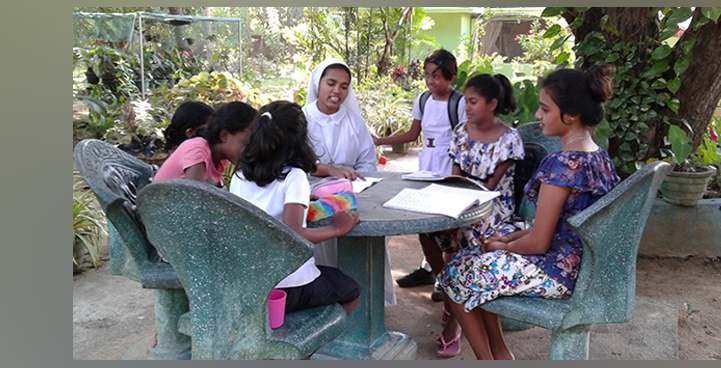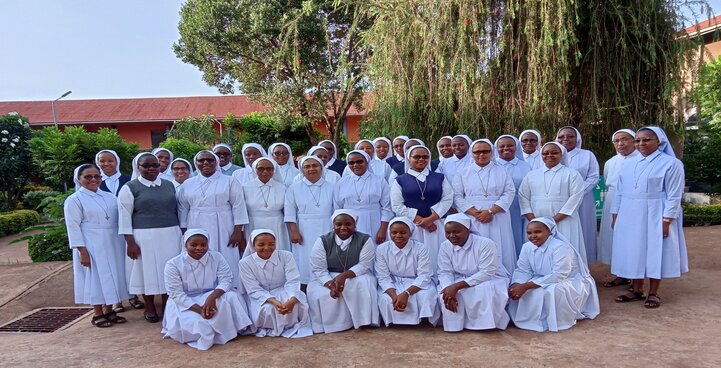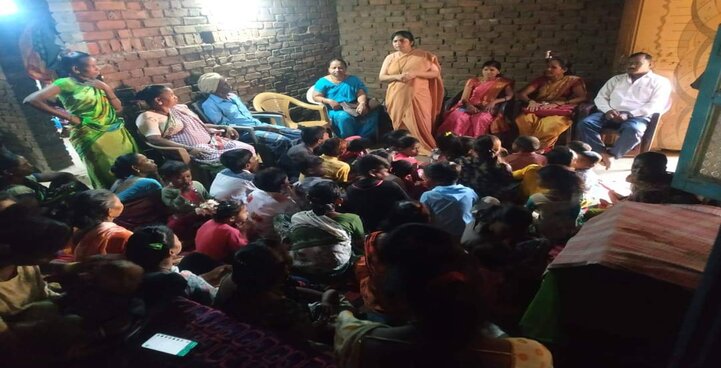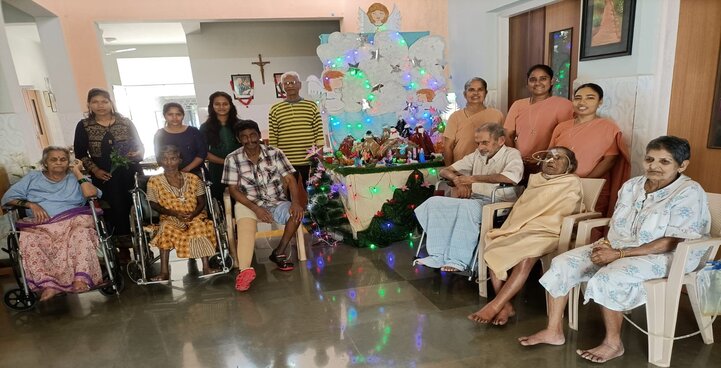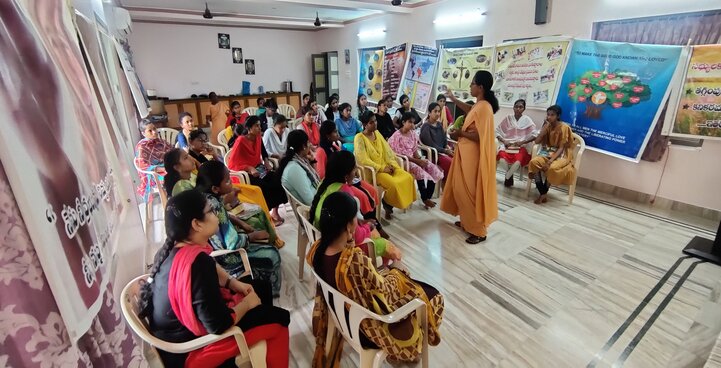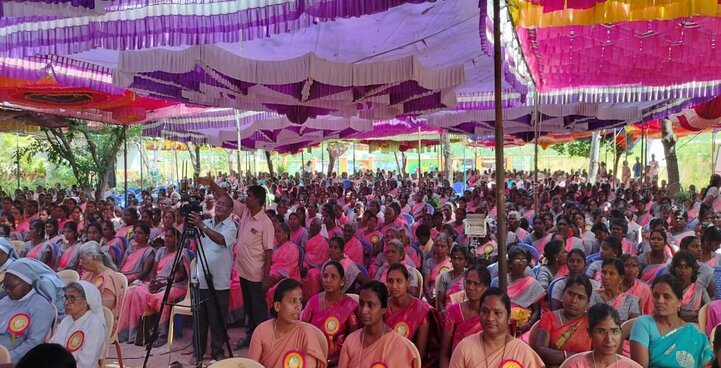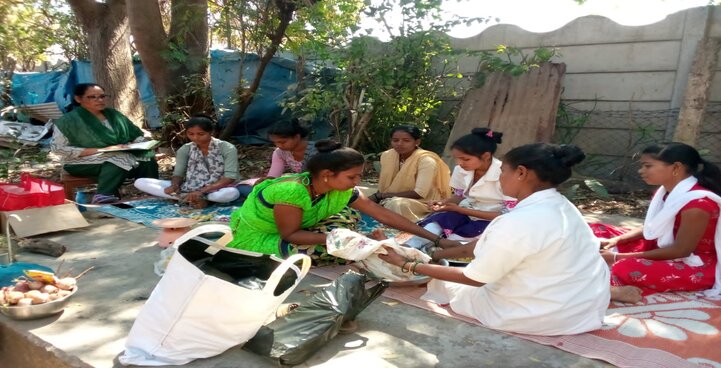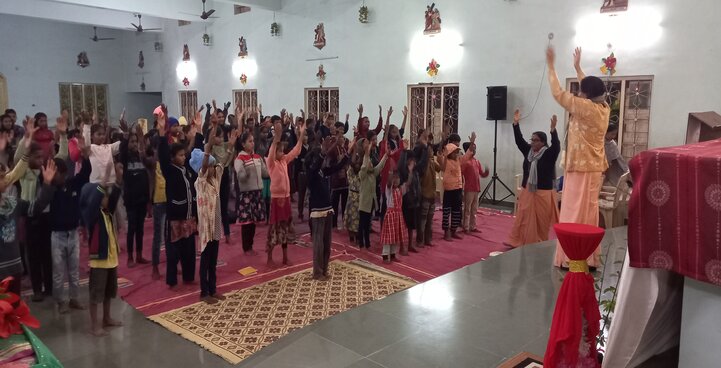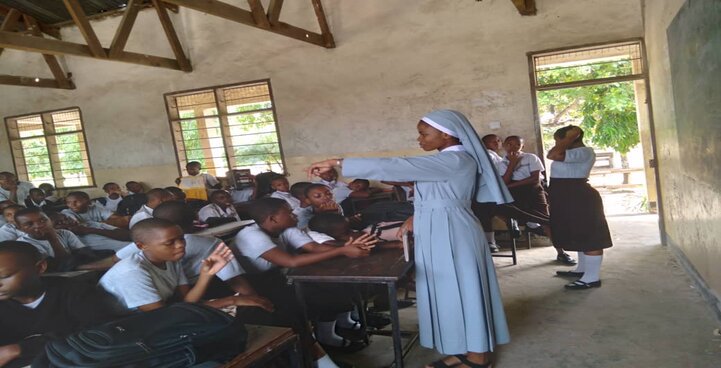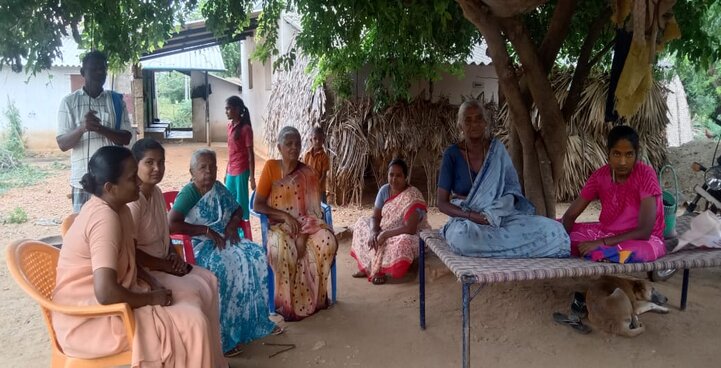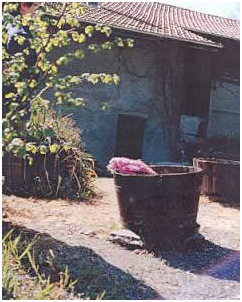 The native house of Mother Claudine Echernier |
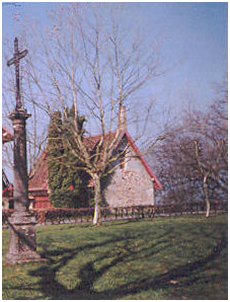 This cross dates back to the first mission given at Chavanod in 1848. On this site stood the church and the old cemetery. |
The Congregation of the Sisters of the Cross was born at Chavanod, a small village of Savoy, in the Southeast of France in 1838. The situation created by the French revolution (1789-1797) and the Industrialization of Europe (1750-1830) affected very much the socio-economic and political conditions of France and especially the region of Savoy.
“At this time, there lived at Chavanod, in the service of the presbytery, a pious, energetic and devoted person: Claudine Echernier. She was a native of Féternes, a small village in Chablais, and she belonged to an extremely poor family. Having lost her mother at the early age of 15, she had to bring up her little brothers and sisters and could leave her home only when she was 27. In the presbytery at Chavanod, she began to gather around her, children and young girls of the parish, in order to teach them reading, writing and catechism.” Historical note p. IX
Fr. Peter Mermier, a zealous priest and Founder of the Missionaries of St. Francis de Sales, was deeply moved by the poverty and illiteracy that prevailed among the poor in the society and he sought for ways and means to remedy the situation. He envisaged the founding of a new type of religious Congregation which would enable poor young women to live a consecrated life in the midst of the world. He met Claudine Echernier during the Mission he preached at Chavanod in 1838. Animated by the fervour she communicated, some girls who approached her every Sunday yearned to dedicate themselves totally to God and to the service of His people.
A Dream Takes Shape
“The intuition of Fr. Mermier and his apostolic sense enlightened by the Holy Spirit and stimulated by the needs of the times, permitted this nucleus of young women, gathered around Claudine, to become the first community of the Sisters of the Cross.
Thus was born, in extreme poverty and great simplicity, a Congregation of a new type for those times. It permitted in fact poor young women to live a consecrated life in the midst of the world, either continuing their work at home, or at their Master’s or living together in community. They could thus help one another in their work, be witnesses of the Gospel in their milieu, and be educators of the poorest.” Historical note p. X
“By their services and life example, these Sisters “set the tone” in their parishes and helped others to come out of their condition of ignorance and poverty. At the time of the death of Claudine Echernier in 1869, there were already 300 Sisters in the Congregation. Historical note p. XI

